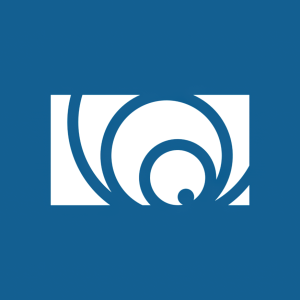AffaMed Therapeutics Announces Partner Vistagen Reports Positive Top-Line Results from Phase 3 PALISADE-2 Trial of Fasedienol (PH94B) Nasal Spray in Social Anxiety Disorder
First positive
Statistically significant rapid-onset reduction in patient-reported Subjective Units of Distress Scale (SUDS) score compared to placebo in a public speaking challenge (primary endpoint, p=0.015)
Trial also met the secondary endpoint, demonstrating a statistically significant difference in proportion of responders compared to placebo as measured by the Clinical Global Impressions Improvement (CGI-I) scale (secondary endpoint, p=0.033)
Fasedienol was well-tolerated and demonstrated a favorable safety profile consistent with all prior trials of fasedienol in social anxiety disorder
Over 25 million Americans are living with social anxiety disorder and 188 million worldwide, including at least 11.3 million in
In June 2020, VistaGen entered into a strategic licensing and collaboration agreement with AffaMed Therapeutics for the clinical development and commercialization of PH94B in
"We are thrilled that these compelling top-line results from the Phase 3 PALISADE-2 trial confirm what was seen in the Phase 2 studies in social anxiety disorder and highlight the potential for fasedienol, with its novel and unique proposed mechanism of action, to transform what is possible for more than 25 million people living with social anxiety in the
Dr. Dayao Zhao, Chief Executive Officer of AffaMed commented: "We are extremely pleased to see the results from the PALISADE-2 trial demonstrating the potential for fasedienol in the treatment of social anxiety, and we look forward to working together with Vistagen to bring forward this new treatment option for the rapidly growing number of individuals living with SAD in
Primary Efficacy Endpoint
The PALISADE-2 trial (n=141) met its primary efficacy endpoint, the difference in mean SUDS score during the public speaking challenge at baseline (Visit 2) and treatment (Visit 3) for patients who received fasedienol (n=70) compared to placebo (n=71) at Visit 3. Fasedienol-treated patients demonstrated a statistically significant greater change in mean SUDS score (least-squares (LS) mean = -13.8) compared to placebo (LS mean = -8.0), for a difference between groups of -5.8 (p=0.015).
Secondary Efficacy Endpoint
The trial met its secondary endpoint, demonstrating a statistically significant difference in the proportion of clinician-assessed responders between fasedienol and placebo as measured by the CGI-I scale. Responders were identified as those who were rated 'very much less anxious' or 'much less anxious' with
Exploratory Efficacy Endpoints
The trial met an important exploratory endpoint of the difference in the proportion of patient-assessed responders between fasedienol and placebo as measured by the Patient's Global Impression of Change (PGI-C) scale. Responders were identified as those who self-rated 'very much less anxious' or 'much less anxious' with
The trial also met the exploratory endpoint of the difference in the proportion of patients in each treatment group with a 20-point improvement in patient-assessed SUDS score from baseline (Visit 2) to treatment (Visit 3). Of the fasedienol-treated patients,
Safety
Fasedienol was observed to be well-tolerated in the study with no severe or serious adverse events (AEs) reported. All treatment-emergent adverse events reported for the overall study were mild or moderate. There were no AEs reported in the fasedienol treatment arm above
About the Phase 3 PALISADE-2 Trial
PALISADE-2 was a multi-center, randomized, double-blind, placebo-controlled, Phase 3 clinical study in adults diagnosed with SAD. The study was designed to evaluate the efficacy, safety, and tolerability of the acute administration of fasedienol to relieve anxiety symptoms in adult patients with SAD during a simulated anxiety-provoking public speaking challenge, as measured using the patient-reported SUDS score.
Enrolled patients had a diagnosis of SAD and demonstrated marked social anxiety at enrollment, as evidenced by a baseline score on the Liebowitz Social Anxiety Scale (LSAS) of at least 70. A total of 141 patients were enrolled in the
Additional analysis of data from the Phase 3 PALISADE-2 trial is ongoing, with plans to present these results at future scientific meetings.
About Fasedienol Nasal Spray
Vistagen's fasedienol (PH94B) is a first-in-class, rapid-onset investigational pherine nasal spray with a novel proposed mechanism of action (MOA) that regulates the olfactory-amygdala neural circuits of fear and anxiety and attenuates the tone of the sympathetic autonomic nervous system, without systemic distribution, potentiation of GABA-A receptors or direct activity on neurons in the brain. Vistagen is developing fasedienol in a Phase 3 program for the treatment of social anxiety disorder. Designed for intranasal administration in low microgram doses, the proposed novel MOA of fasedienol is fundamentally differentiated from all currently approved anti-anxiety medications, including all SSRIs and SNRIs as well as benzodiazepines prescribed off-label.
About Social Anxiety Disorder
Social anxiety disorder (SAD) affects over 25 million Americans and 188 million worldwide, including at least 11.3 million in
About AffaMed Therapeutics
AffaMed Therapeutics is a clinical stage biopharmaceutical company focused on developing and commercializing transformative pharmaceutical, digital and surgical products that address critical unmet medical needs in ophthalmological, neurological and psychiatric disorders for patients in
1. National Health and Wellness Survey (NHWS), 2021. 2. Stein, D.J., Lim, C.C.W., Roest, A.M. et al. The cross-national epidemiology of social anxiety disorder: Data from the World Mental Health Survey Initiative. BMC Med 15, 143 (2017). 3. Frost & Sullivan. January 2022. Global Market Study of CNS and Ophthalmic Treatment Market, 2022. |
SOURCE AffaMed Therapeutics Ltd.







